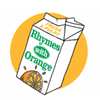Does climate change spell the end of 'sweater weather?'
Published in Slideshow World
Subscribe
Does climate change spell the end of sweater weather?
The arrival of fall and its milder temperatures—especially welcome this year after the fourth hottest summer on record in the U.S.—have many looking forward to the return of "sweater weather" and all things cozy—wraps, hoodies, loungewear, scarves, and scrunchy socks. The brutal heat of the past few months is gone; now closets and drawers must be rearranged—and new items bought—for the colder months.
The rise of unpredictable weather patterns and seasonal temperatures, however, has transformed some long-standing clothing industry practices, according to Melissa Scott, founder of Modefywear, a Los Angeles-based activewear brand for women who want full coverage.
"Consumers today want more sun protection in their clothing," Scott told Stacker. "That's something that was not done in the past, sun protection, but increasingly that's what consumers want in everyday clothing, in all seasons."
Another change Scott has seen during her decade in the industry is that her factory is not making as many wool or heavy pieces as they did in the past. "When we use wool, it's now merino wool, because it's extremely breathable and lighter," she said. In other words, sweater weather is still here, but it just might be a different kind of sweater.
Weather-related cues have long influenced shopping and lifestyle habits, but the acceleration of changing weather patterns can make that dynamic more complicated and confounding. The RealReal talked to experts and used data from Climate Central, Applied Climate Information System, and Google Trends to examine how climate change is impacting "sweater weather."
Visit thestacker.com for similar lists and stories.
When is sweater weather, anyway?
The Modefywear manufacturing plant, which produces its own line of clothing as well as lines for dozens of other designers and smaller companies, is seeing a move to lighter-weight fabrics overall, according to Scott. That doesn't mean there is any less focus on fall attire this time of year, but it might look and feel a bit different than the fashion of a generation ago.
"Sweater weather means fall has come, that the season has changed," Scott said. "You think darker clothes, and we still have those, but now it's more cotton, spandex, and polyester."
There might be no official definition of "sweater weather," but most consider it to be when temperatures fall between 55 and 65 F, according to a survey from the Weather Channel. But it's not only about temperature; the degree of cloudiness, sunlight, and rain also influences how people choose to dress on a given day.
In general, it's fair to say that most places in the U.S. experience "sweater weather" days in the fall, but how often will vary greatly by region. For instance, in 2023, 55% of U.S. counties had an average temperature below 60 F for at least half of their fall days.
When it comes to some consumer habits, the more things change, the more they stay the same, Haley Brennan told Stacker. She's worked for a mix of small clothing boutiques and big corporate retailers. She describes herself as a microinfluencer with a fashion and lifestyle blog called Haley's Life in Color.
"People do seem to still gravitate toward sweaters, coats, and layers. It seems like when something is cute, it's cute—no matter the weather," Brennan said in a text. "Sweater weather, to me, used to signify those crisp fall days where you finally get to break out your heavier knits, but you don't yet need a full coat on top. Unfortunately, with climate change, those days seem few and far between."
A shortening start to sweater weather
Scott said she expects her plant to use around 20,000 bolts (or about 570 miles) of fabric this fall, which, she estimated, will make about 150,000 fall pieces—mainly sweaters, flannels, thermals, and other cozy items. The demand for fall styles is as robust as ever.
Warmer fall weather has been a noticeable trend over the past few decades, as seen in Climate Central's fall temperature report. Measuring fall temperatures in 242 cities, the report found that 97 cities saw two more weeks above fall temperature norms in 2023 compared to 1970. This warming trend, along with changes in air quality, has had an impact on how people dress.
"The use of lighter fabrics year-round is easier for the company," Scott said, acknowledging one benefit of using the same lighter fabrics in all seasons. "It means fewer [fabric] sources, which is more cost-effective. We are not using so many different bolts of fabric, and the process is more streamlined."
The warming trend has required designers to lean into the desires of consumers more rather than adhering to seasonality. "My friends and I would, in the past, have talked each other out of buying that skirt or short sleeve as fall and winter approached," Brennan said in a text. "Now we say things like 'Well, we might get another really warm day,' or, 'I don't know, October and November have been really warm lately!'"
Sweater season carries into winter
Another phenomenon of warming temperatures is that sweater weather stretches well beyond the fall and into the winter. Shopping trends are increasingly being driven by "micro seasons" and the rapid cycles of fast fashion.
"We're getting to the point now where it's hotter for longer," Scott said. "People still want sweaters, but in lighter-weight options."
Fall may be the start of sweater weather, but Google Trends data suggests people more often search for sweaters at the start of December (Christmas gift, anyone?) when temperatures more consistently demand sweaters. For most of the U.S., Google searches for sweaters peaked in the first and second week of December 2023. National Google shopping search data from 2018 to 2023 for sweaters echoes those trends.
Julia Rockwell, a San Francisco-based sustainability expert, author, and founder of The Mothering Earth Project, told Stacker that shifting attitudes and behavior around clothes shopping can have a profound impact on the earth. Many consumer and industry practices—especially the explosion of fast fashion, she noted—have produced needless waste and damage to the planet.
One way her family has tried to respond in the past few years is to buy secondhand clothes, purchase only what they need, and (if possible) mend clothes when they start to fray instead of replacing them, Rockwell said. Secondhand shopping is easier than it used to be with online retailers, swap parties, proliferation of consignment and thrift shops, and a growing recognition of its ecological value, she added.
"One benefit of secondhand clothes is that you can always shop for the season it is rather than for what's in the stores," Rockwell said, referring to the clothing store practice of stocking items for the upcoming season. "When I shop, I look for staple pieces and look for quality—something that can last years. I'm not thinking about just one season."
Story editing by Carren Jao. Additional editing by Kelly Glass and Elisa Huang. Copy editing by Tim Bruns.
This story originally appeared on The RealReal and was produced and distributed in partnership with Stacker Studio.










Comments